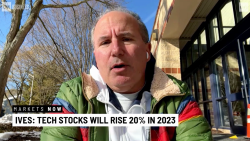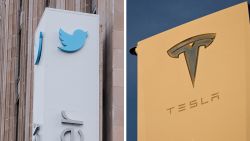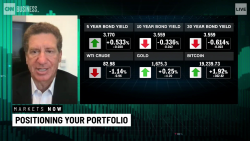The JPMorgan analyst who foretold General Electric’s downfall is warning of more trouble for the storied American conglomerate.
C. Stephen Tusa Jr. downgraded GE (GE) to “underweight” on Monday and predicted the stock will nearly get cut in half to $5 by the end of the year.
In a withering, 123-page research report, the influential JPMorgan (JPM) analyst argued the “risk/reward” for owning GE has “tilted back negative” because the stock’s 2019 spike hasn’t been based on underlying change.
“We believe many investors are underestimating the severity of the challenges and underlying risks at GE,” Tusa wrote to clients, “while overestimating the value of small positives.”
GE’s stock plunged 8% to $9.15 on the downgrade, making it the biggest loser in the S&P 500. The maker of light bulbs and jet engines is in jeopardy of suffering its worst day since last fall. GE was up 38% on the year as of Friday’s close.
Tusa’s GE calls are powerful because he presciently went negative on the iconic company in May 2016, when the stock was trading at $30. GE would eventually lose three-quarters of its value because of a cash crisis sparked by mounting debt and poorly timed acquisitions. The company even got kicked out of the exclusive 30-stock Dow.
The JPMorgan analyst upgraded GE to “neutral” in December and spelled out a path for reviving the company. Even though Tusa voiced skepticism in that research report, his upgrade helped send the stock skyrocketing.
Nightmare recession scenario
While Wall Street is betting the GE crisis is over, Tusa is urging extreme caution. He pointed to GE’s “stubbornly heavy debt,” GE Power’s “weak” results, the need to pump GE Capital with more cash and overexuberance about the health of the aviation division.
The nightmare scenario is that the next recession arrives before GE has repaired its debt-riddled balance sheet.
GE would be “vulnerable to liquidity issues in the event of a recession,” Tusa said.
An economic downturn wouldn’t just prolong GE’s turnaround plan. The ensuing market turmoil would add stress to GE’s pension program, which is already facing a massive shortfall. A decline in asset values, along with rate cuts from the Federal Reserve, would increase GE’s pension liabilities by more than $30 billion, JPMorgan estimates.
GE’s stock could plummet “substantially lower” than $5 if the company doesn’t raise more cash and there is a recession, he said.
Other analysts have expressed confidence in GE’s turnaround under Larry Culp, who has moved with a sense of urgency since becoming CEO last fall.
Last month, RBC analyst Deane Dray raised his price target on GE to $13 and kept an “outperform” rating on the stock.
“There is still much to fix at GE, but the market can now have confidence in the senior leader at the helm,” Dray wrote in a report to clients.
‘Where is all the money going?’
Even though investors turned uber-bullish on GE this year, the company’s management team has preached caution.
Culp recently warned that 2019 will be another brutal year, marked by up to $2 billion of negative free cash flow from its industrial businesses. That would be a sharp reversal from the $4.3 billion generated in 2018.
“GE’s challenges in 2019 are complex but clear,” Culp said in a statement last month. “We are facing them head on as we execute our strategic priorities to improve our financial position.”
John Inch, an analyst at Gordon Haskett, predicted Monday that GE could likely lose about $2.5 billion in free cash flow during the first quarter. Anything worse than that would raise concern about GE’s financial health.
“Both the bond markets and ratings agencies would not be pleased,” Inch wrote in a report.
Inch expressed dismay over GE’s worsening debt ratios in the face of efforts to raise cash by selling long-held businesses.
“Where is all the money going?” Inch asked. “The company appears to be approaching the end of the runway of obvious assets it could sell.”
GE gave EU officials ‘incorrect information’
Meanwhile, GE landed in hot water with regulators for a recent renewable energy acquisition.
The European Commission on Monday fined GE 52 million euros ($59 million) for providing authorities “incorrect information” about its 2017 takeover of LM Wind.
Regulators said GE initially said it was not developing any high-power offshore wind turbines beyond its existing 6 megawatt turbine. The commission later discovered from an unnamed “third party” that GE was “simultaneously” offering a 12 megawatt offshore wind turbine to potential customers. GE corrected the error a few weeks later and regulators later approved the $1.7 billion LM Wind acquisition.
GE said in a statement that it is reviewing the European Commission decision before determining its next steps.























